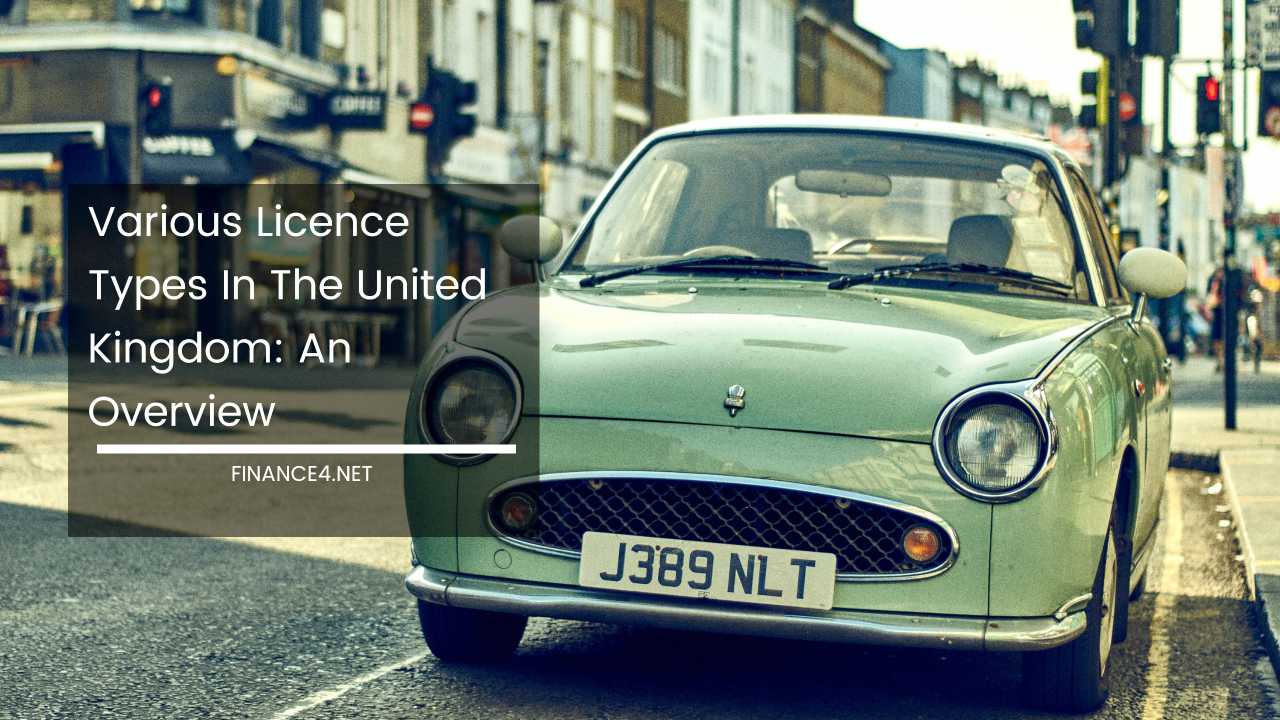Various Licence Types In The United Kingdom

The United Kingdom boasts a robust driver licensing system catering to diverse driver profiles and vehicle types.
This comprehensive guide delves into the various licence options available, their eligibility criteria, key points to remember for each, and additional considerations for a smooth driving experience in the UK.
Navigating the Licence Landscape: Categories and Subcategories
The UK driver licensing system operates on a two-tiered structure:
- Provisional Licence: This learner’s permit allows individuals to practice driving under supervision before obtaining a full licence.
- Full Licence: This unrestricted licence grants holders the privilege to drive specific vehicle categories independently.
Full licences further categorize drivers based on the type of vehicle they can operate. Here’s a breakdown of some common licence categories and their intricacies:
- Category A (Motorcycles):
- A: Motorcycles exceeding 35kW power output or a specific power-to-weight ratio.
- A1: Lighter motorcycles up to 125cc engine capacity and 11kW power output.
- AM: Mopeds and light quadricycles with a maximum speed of 45km/h (28mph).
- Category B (Cars): The most common licence for car drivers, allowing operation of vehicles with a maximum authorized mass (MAM) of 3,500kg and up to 8 passenger seats.
- Category B1: Permits driving of light quadricycles and certain lightweight vehicles exceeding AM category restrictions.
- Category C (Large Goods Vehicles): Grants authorization to operate heavy goods vehicles exceeding 3,500kg MAM. Requires additional training and endorsements.
- Category D (Buses): Authorizes driving buses with more than 8 passenger seats. Similar to Category C, it demands additional qualifications.
These categories often have sub-categories denoted by codes on the licence. For example, code 78 restricts driving to vehicles with automatic transmission only, while code 96 allows towing trailers exceeding a specific weight.
Learner Driver Licence (Provisional Licence): Your Stepping Stone
- Eligibility: Open to individuals who meet the minimum age requirement (typically 17 years old) and pass a theory test on road rules and regulations.
- Purpose: Allows supervised driving practice to gain experience before applying for a full licence. This crucial stage helps build confidence and hone essential driving skills.
- Restrictions: Requires displaying L plates on the vehicle, usually front and back, and mandates supervision by a qualified driver over 21 years old with a valid full licence.
- Validity: Varies depending on the jurisdiction, but typically remains valid for several years, allowing ample time for practice.
Remember, a learner driver licence doesn’t grant unsupervised driving privileges. Always prioritize safety and responsible practice during this stage.
Full Driver Licence: Unrestricted Freedom (With Responsibility)
- Eligibility: Requires passing a practical driving test after holding a provisional licence for a certain period. Vision tests may also be mandatory to ensure adequate visual acuity for safe driving.
- Purpose: Grants unrestricted driving privileges within the specified vehicle category on your licence. You can finally hit the road independently, but remember, the responsibility to drive safely always comes first.
- Validity: Full licences generally hold indefinite validity unless revoked due to medical reasons or certain driving offences. However, it’s recommended to keep your licence details updated with the Driver and Vehicle Licensing Agency (DVLA) to avoid any administrative hassles.
Age-Specific Licences: Catering to Different Stages of Life
- Aged Driver Licence (Over 50s Licence): Not a separate licence category, but some insurers offer tailored insurance policies for drivers aged 50 or above. These policies may involve additional assessments or medical checks to address potential age-related concerns. It’s always best to compare insurance options to find the most suitable coverage for your needs.
- Young Driver Licence (17-21 year olds): Young drivers can obtain either a provisional licence or a full licence depending on their experience and the type of vehicle they wish to operate. They may face higher insurance premiums due to statistically higher accident risks associated with this age group. Consider taking advantage of additional training programs or defensive driving courses offered by reputable institutions to enhance your skills and potentially lower insurance costs.
Foreign Driver Licence / International Driving Permit: Exploring the UK as a Visitor
- Eligibility: Valid driving licences issued in countries outside the European Economic Area (EEA) are generally recognized for up to one year in the UK.
- Purpose: Allows temporary driving privileges to foreign visitors or residents with valid licences from their home countries. This facilitates exploration and enhances their overall UK experience.
- Restrictions: Driving validity is limited to one year. After that, licence holders may need to exchange their foreign licence for a UK licence, depending on the issuing country. Here’s a detailed breakdown of the exchange process:
Exchanging Your Foreign Licence for a UK Licence:
The UK has exchange agreements with several countries, allowing holders of valid licences from those countries to swap them for a UK licence without needing to retake driving tests. Here are the steps involved in the exchange process:
- Check Eligibility: The first step is to verify if your country has a licence exchange agreement with the UK. You can find a comprehensive list of countries with such agreements on the DVLA website (https://www.gov.uk/driving-licence-categories).
- Gather Required Documents: If your country is on the list, gather the necessary documents, which typically include:
- Your original valid foreign licence.
- A certified translation of your licence into English (if it’s not already in English).
- Proof of your identity (passport or national ID card).
- Proof of your UK address (utility bill, bank statement).
- Completed application form obtained from the DVLA website.
- Submit Your Application: You can submit your application online or by mail to the DVLA. There’s a processing fee associated with the exchange.
- Receive Your UK Licence: Once your application is approved, you’ll receive your UK licence by mail. You can then continue driving legally in the UK under the terms of your new licence.
Important Considerations for Foreign Drivers:
- International Driving Permit (IDP): While not a substitute for a valid foreign licence, carrying an IDP alongside your licence is recommended for additional identification purposes, especially if your licence is not in English.
- Validity Period: Remember, even with a valid foreign licence or an IDP, your driving validity in the UK is limited to one year. Plan your exchange process accordingly to avoid any driving restrictions.
- Driving Restrictions: Double-check if your foreign licence category translates directly to a UK category. You may need to apply for a different category if there are any discrepancies.
Additional Considerations for Smooth Sailing on UK Roads
- Medical Requirements: Individuals with certain medical conditions may require additional medical checks or adaptations to their vehicles to ensure safe driving. Always consult with your doctor and the DVLA for guidance if you have any medical concerns.
- Driving Theory Test Resources: The Driver and Vehicle Standards Agency (DVLA) website offers a wealth of resources to help you prepare for the theory test, including practice tests and the official Highway Code.
- Driving Lessons and Training: Consider enrolling in professional driving lessons, especially if you’re a new driver or haven’t driven in the UK before. Reputable driving instructors can equip you with the necessary skills and knowledge to navigate UK roads confidently.
- Motor Insurance: Having valid car insurance is mandatory for all drivers in the UK. Explore different insurance providers and compare quotes to find the most competitive rates and coverage options that suit your needs.
By understanding the different licence categories, eligibility criteria, and additional considerations, you can ensure a smooth and legal driving experience in the United Kingdom.
Remember, prioritizing safety, adhering to traffic regulations, and staying up-to-date on the latest licensing requirements are paramount for responsible driving on UK roads.



